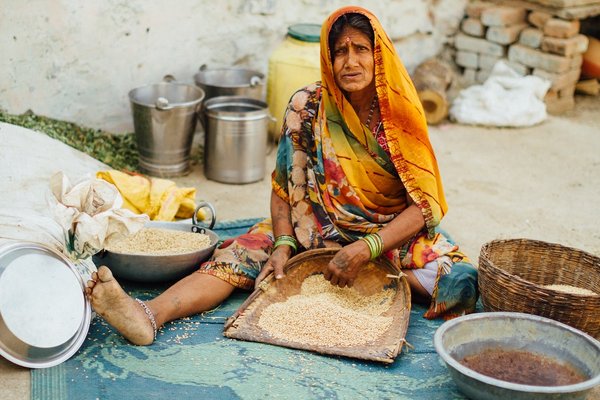- Share this article
- Subscribe to our newsletter
India’s new ban on rice exports – potential threats to global supply, prices, and food security
The ban is the latest blow to the global rice market, whose prices have risen 15-20 per cent since September 2022– this coming after a period of relative stability in the earlier part of that year, even as prices of other cereals were soaring due to the Russia-Ukraine war. Over the past 15 years, India has become the world’s largest rice exporter, accounting for 40 per cent of global rice exports in 2022/23, so any move it makes can have significant market reverberations.
India’s current measure adds to its earlier, more limited export restrictions on rice. In 2022, the government implemented a ban on the export of broken rice and imposed a supplemental tariff of 20 per cent on exports of non-basmati rice. Yet India rice exports still totalled a record high of 22.3 million metric tons in calendar year 2022. But the latest ban may send those numbers falling, posing risks of higher global prices and heightened food insecurity.
The new trade restriction threatens already vulnerable global rice markets. While current crop forecasters continue to project normal yields assuming normal weather patterns, a delayed or truncated monsoon this summer could lower rice yields and increase demand for imports at the same time the world’s largest exporter is restricting supplies to the rest of the world.
India’s growing presence in the global rice market
India emerged as the world’s largest rice exporter only in the last ten years. Historically poor yields and production meant that the country was a net rice importer through most of the 1960s and early 1970s. By the late 1970s, India had largely achieved self-sufficiency, and by the early 2000s had become a net rice exporter. Since 2010, rice production has increased by 40 per cent (by over 40 million tons, to a grand total of 136 million tons, making India the second largest producer after China, with 146 million tons). India’s exports over the same period rose by 20 million tons. China’s rice exports are a fraction of India’s.
As a result, India has been the largest global rice exporter since 2014/15. Over the past four years, its market share has averaged over 40 per cent.
The importance of imported rice in country diets
Rice is one of the most widely consumed cereals in the world, and accounts for a large share of caloric consumption in many countries, particularly in South and Southeast Asia and in some countries in Africa.
For example, in Asia, the share of rice consumption in total calorie intake a day in some of the top consuming countries – including Bangladesh, Bhutan, Cambodia, Indonesia, Myanmar, Nepal, Thailand, the Philippines, and Sri Lanka – ranges from 40 to 67 per cent, according to the UN Food and Agriculture Organization. Importantly, many of these countries – including Bangladesh, Bhutan, China, Sri Lanka, and Nepal – import a significant portion of their rice from India. Much of the rice consumed outside of Asia is also imported.
India and export restrictions
India’s latest export ban may not come as a surprise. The IFPRI export restrictions tracker shows that India has often imposed export control measures during periods of high global prices. During the 2007-08 and 2010-11 food price crises, India banned export of rice, mostly non-basmati rice, for extended periods. With global markets disrupted by Russia’s invasion of Ukraine starting in February 2022, India initially imposed a wheat export ban, fearing domestic inflation and rising import demand from the rest of the world, then the limit on exports of 5 per cent broken rice and the 20 per cent export levy on unmilled and husked rice (both likely to continue through 2023).
India’s decision to ban exports of non-basmati rice varieties creates a new vulnerability in commodities markets that threatens already tenuous global food security.
(Joseph Glauber and Abdullah Mamun, IFPRI / pas)
More information:
IFPRI export restrictions tracker





Add a comment
Be the First to Comment